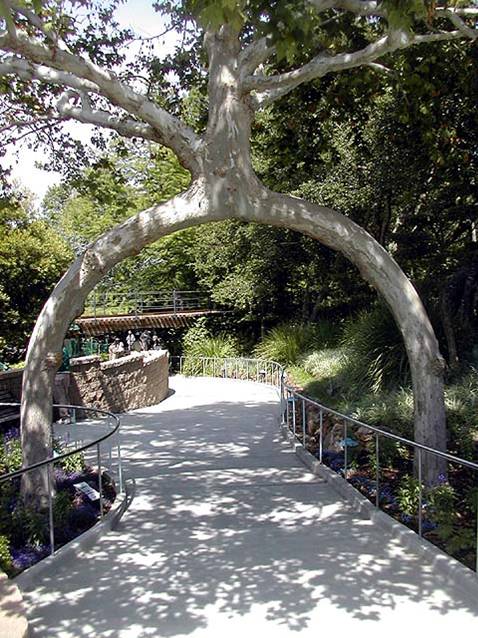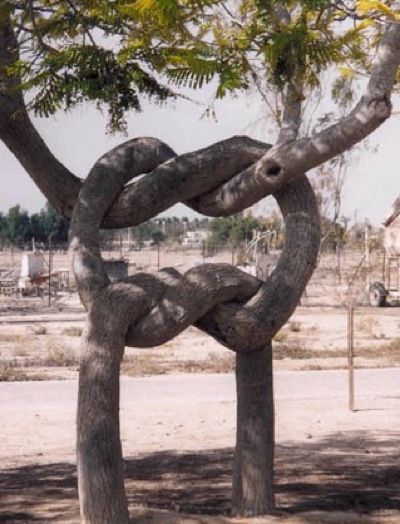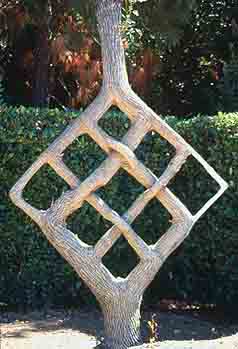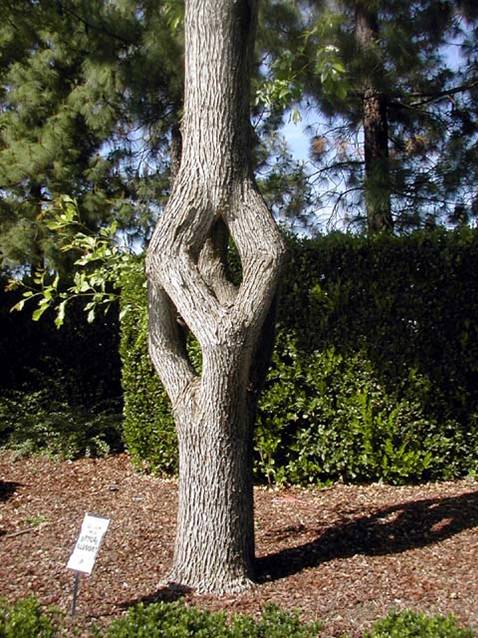
Nearly a hundred years ago a Swedish born bean farmer named Axel Erlandson settled in California and in an effort to entertain his family he shaped trees. Axel could have never have guessed that his playful masterpieces would exist still today and that his tree story would endure long past his death.

Having discovered the property of trees to graft to themselves (called inosculation), Axel created over a hundred trees in amusing and odd shapes. He was quite coy about his techniques, often telling people that he talked to the trees to encourage them to grow into their fabulous shapes. After 20 years of shaping and creating, word started getting out about Axel’s Tree collection and it was dubbed the tree circus. Robert Ripley featured his tree circus in his magazine 12 times.


In the Mid 60’s Axel passed away but his trees lived on and though his property fell into disrepair, many of the trees survived. In the 70’s a local architect named Mark Primark risked arrest for trespassing to feed and water the trees and was able to keep 25 circus trees alive. Finally, they attracted the attention of Michael Bonfante, owner of Nob Hill Foods. Bonfante was a horticultural connoisseur and he moved them to his theme park (Gilroy Gardens) in 1985 where 19 of the original trees still survive.

Gilroy Gardens regularly opens for “gardens only” days, (usually on Fridays), when most of the rides and shops are closed, making it easier to walk around and look at the plantings. There are no rides but you can hop on a train that circles the park or take the boat that floats through the Rainbow Garden. Gilroy Gardens is the only California amusement park with a horticultural theme.


Erlandson really started something and his creations have inspired numerous other Tree shapers. In 2005 a Japanese expo was devoted to these horticultural creations of “Circus Trees”. If you want to learn more about Axel’s followers, check out tree shapers, where the history of shaped trees is chronicled.



Poor amazing trees. I’ve always found his work fascinating and rather appalling.
For those interested also check out the term ‘pleaching trees’ which should be helpful in understanding the techniques used.
The following is a guess on another little known method that I think Erlandson also used on trees with opposite branching. In early spring before the buds break, on fairly young sapling growth one makes a vertical cut through the trunk and then inserts the tip end of a branch through the cut forming a circle. The wound heals, the branch continues to grow and the process can be repeated with the same branch in the future. This is how a series of circles can be grafted onto a tree.